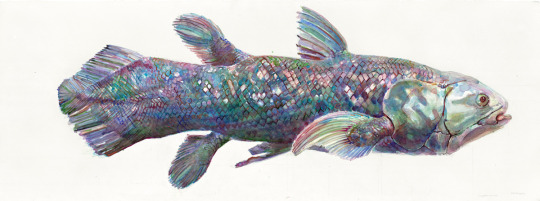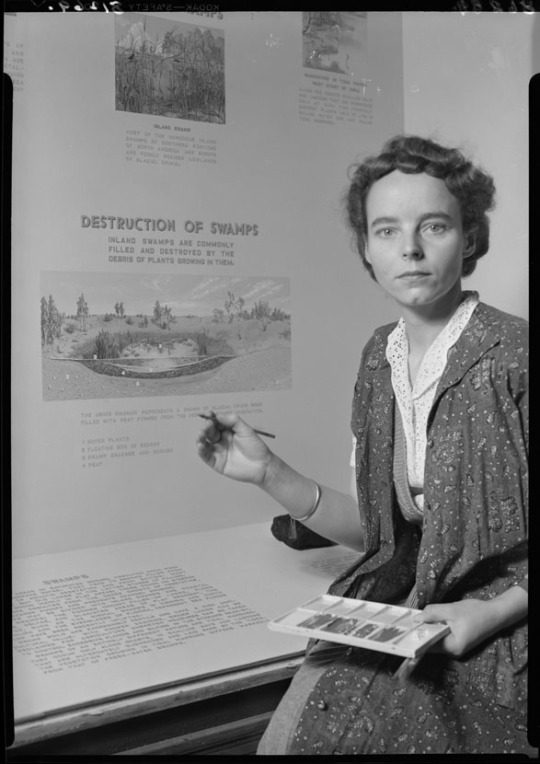#brain scoop
The Brain Scoop: 60 Second Specimens
yeah this is getting kinda weird
The Brain Scoop: 60 Second Specimens
A Beetle’s Beloved Beer Bottle
guess you could say his ex was literal garbage
The Brain Scoop: 60 Second Specimens
Science by Day | Spy by Night
These reptiles were donated to the Field Museum by Edward Harrison Taylor, a scientist studying reptiles and amphibians at the University of Kansas – who was also moonlighting as a spy for the United States Government. :o
If you like these short/sweet videos– we posted on about a Birder-Turned-Murderer yesterday, and stay tuned in the coming weeks for more! Check out the Playlist here: 60 Second Specimens.
The Brain Scoop: 60 Second Specimens
Murder by Birder
Every specimen has a story: this one was donated to the Field Museum by a murderer.
Before he was charged and convicted with the murder of 14-year-old Bobby Franks, Nathan Leopold was an active birder in the Chicago community. After his conviction and sentencing he donated his collection of birds and published checklists to the Field Museum, where they remain today.
Kirtland’s Warblers (Setophaga kirtlandii) are relatively rare birds, and back in the 1920’s little was known about their migration behavior or life histories. This specimen remains important today – not just for its historical significance in connection with a convicted murderer – but for the scientific value it provides as a voucher specimen for research.
Spring Migration Notes… by a Murderer – blog post on Fieldmuseum.org
Leopold and Loeb’s Criminal Minds – Smithsonian Magazine
Spring Migration Notes of the Chicago Area, including a written letter from Leopold to the Field inquiring about one of his specimens – Biodiversity Heritage Library
Meteorite or MeteorWRONG?!
THIS VIDEO IS SO FUN – we teach you the differences between meteorites, and deceptive meteorite wannabes – and then at the end we have a quiz and you can test your knowledge! yay interactive videos!
The Brain Scoop:
Skunk Dissection
It’s smelly and it’s stinky
It’s goofy and it’s freaky
It’s all together geeky
A Brain Scoop Dissection!
*snap snap*
Neat.
The Brain Scoop:
Fossils in the Floor
A love letter from me, to the little details in life that bring us together across space and time.
Just had to share a design I recently finished up! I’ve actually had this design on the backburner for years, but got the drive to come back to finally finish it.
It’s referencing the amazing youtube channel The Brain Scoop and a discussion on conservation efforts being spent towards marketable animals like pandas vs more environmentally necessary animals like unionid bivalves.——-
Please don’t remove the caption or the watermark.
Please don’t repost without permission. Thank you!WAIT
HOLD ON
I NEED THIS. I’M GOING TO MAKE THIS HAPPEN WE ARE GOING TO HAVE THIS SHIRT THANK YOU @annekubis

We made it happen!
Freshwater bivalves are the largest group of threatened/endangered species on the planet. To help raise awareness for these under-appreciated filter-feeders, we have a limited number of shirts and decals – just in time for Endangered Species Day (tomorrow!)
Post link
Painting the Caracal
The Brain Scoop
I’ve been doing the art thing for much longer than I’ve been working in the natural sciences– so it was only time before we got the Field Museum’s only Artist-In-Residence, Peggy Macnamara, to join us for a day of painting in the Brain Scoop studio.
I love this video and Peggy has so many great insights; this quote at the end is my favorite:
I think there’s much more talent out there than ever gets awakened. I think they get discouraged because they see end product. […] but somehow, this, they think they’ve got to come readymade with an idea and ability. It’s just, if it works as a meditation for you, you’re supposed to be doing it, I think. […] And who says nowadays, what’s good and what’s not? Make a thing.




The Brain Scoop:
Paleoart: Painting the land before time
Maybe you’ve heard of the famous paleoartist Charles R. Knight– but what about John Conrad Hansen, or Maidi Wiebe? The latter two created numerous works of art for scientific publications, exhibits and children’s books for the Field Museum in the early- mid 1900′s.
I spent the last eight months digging up any information about them I could find for this video. I hope you enjoy!

Maidi Wiebe, painting the Destruction of Swamps. © The Field Museum, GEO81269.
The Brain Scoop:
The Animal Sound Library
Important things to know about this video:
- The Museum für Naturkunde has one of the largest collections of animal voices in the world
- Scientists plant recording devices in local wetlands to track species diversity, migration patterns, and populations of rare birds year-round
- one of the early field recorders was first invited to be used by agents in the CIA :o
- Dr. Sarah Darwin does a solid impression of a nightingale. fun fact she also happens to be the great-great-granddaughter of Charles Darwin. (!)
The Brain Scoop:
This Fossil Arachnid Penis was a HUGE Discovery
It’s not every day you get to discuss the scientific implications of a 99-million year old harvestmen penis in amber.
As I mentioned in my last post, I am SOOOOO close to being done with my master’s thesis TTnTT
If you have time the next couple days, I could use as many any you as possible to help me look over my final draft before I submit it to my advisor for review on the 29th March 2022!
Synopsis
The growth of social media platforms like YouTube has opened up a valuable new resource for educational content, one which is not always fully realised by institutions like museums. The YouTube channel, The Brain Scoop, is an example of how the platform can be embraced and how it can differ from traditional video mediums like TV and other distributed film media. Its approach to educational content stands to inspire other museums to rethink how they create and engage with online educational videos.
My thesis is intentionally accessible to non-academics, and does not have any heavy academic language or a requirement of any deep knowledge of YouTube or museums. Below are links to the document (single doc or individual chapters) on Google Docs. All should have permissions for commenting turned on.
As a single document
Full Thesis Draft (excl. Appendix)
Appendix
Individual Chapters
Chapter 1: Introduction
Chapter 2: The Brain Scoop
Chapter 3: Method and Findings
Chapter 4: Recommendations
References
Appendix
*My computer freaks out at the single full document sometimes so you can access both that and the individual chapters. They should be identical otherwise so whichever works best for you.
What To Help With
Anything!
At this stage I want any and all feedback. Whatever you’re happy to provide I will accept. I still have 3,000 words free before I hit my max length so if you feel there is something I should add I welcome that too. Orange highlights are notes to myself.
Suggestions to look at:
- Grammar (spelling, punctuation, etc)
- Sentence structure
- Readability
- Academic numbers (should I use 1 or ONE, etc)
- Citations aligning with References
- Tables/Figures aligning with Appendix
- Understandability (does it make sense?)
- Accuracy of statements (do you think something is incorrect?)
- Weak arguments (PLEASE point these out!)
- Missing information (Does it look like I forgot to add something?)
- Superfluous information (Adds nothing to the paper)
- Superfluous repetition (Say the same thing twice without benifit)
- Flow (Do sentences, paragraphs, sections flow well into each other?)
- DON’T worry about page formatting, to come later.
So please, if you have some time in the next couple of days, please give it a read through and comment. Be (nicely) BRUTAL! I would rather find weaknesses and errors now when I have hime to fix them!!! And don’t hesitate to make (lots of) comments, the more I have to work with now the better this will be once I submit it. Also, please feel free to share it with friends you think could help :)

